I used 500U (approximately 3800 yuan) to challenge earning 100,000U; I recommend using a step-by-step rolling position strategy:
This is also a method tested in 2025: within one month, the return rate reached 1483.67%, earning 100,000U!
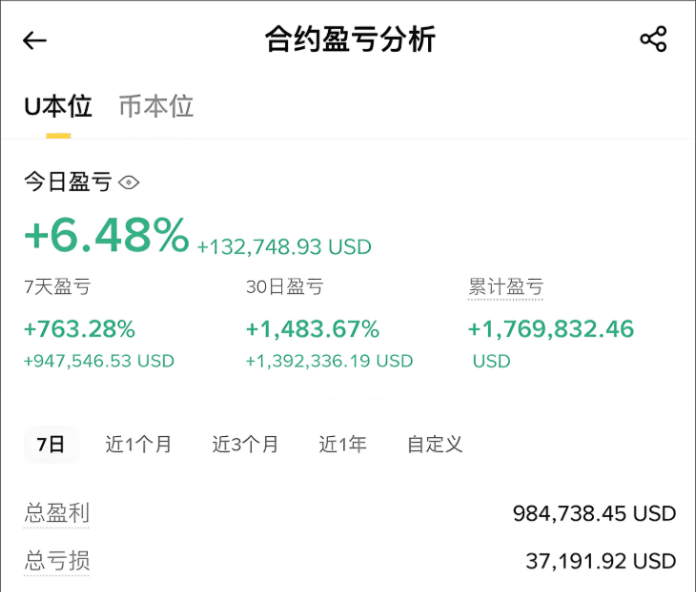
The first phase operates on a unit of 100U per trade, focusing on hot coin contracts, strictly setting a 3%-5% stop loss and an 8%-15% take profit.
Use the classic three-tier approach: 100U → 200U → 400U → 800U (fully reinvest all profits).
Particularly note: set the upper limit of the challenge to 3 times, even if the first 9 times are successful, one liquidation could potentially wipe out profits.
After successfully passing three levels, the principal will accumulate to 1000U + 200U in reserve funds. At this stage, the compound strategy system will be activated:
[Lightning War+] Ultra-short cycle speculation.
Allocation ratio: 15%-20% position (150-200U).
Focus on targets: mainstream coins like BTC/ETH.
Time frame: 15-minute level fluctuations.
Profit-loss characteristics: high volatility (daily return rate can reach 20%+, with equivalent drawdown risk).
[Position Warfare+] Strategic layout.
Allocation ratio: 5%-10% position (50-100U).
Operating mode: 10x leverage layout for 4-hour level market.
Profit management: withdraw 50% of profits weekly for dollar-cost averaging into BTC.
Core advantage: balancing short-term fluctuations with long-term value accumulation.
[Destruction War+] Trend capture.
Allocation ratio: 20%-30% flexible position.
Operational requirements: must meet ① clear trend line breakthrough ② RSI <30/70 oversold buying zone ③ 3-day volume anomaly.
Holding period: 3-15 days for mid-line holding.
Risk control points: set a profit-loss ratio of over 1:3 and use a trailing stop profit strategy.
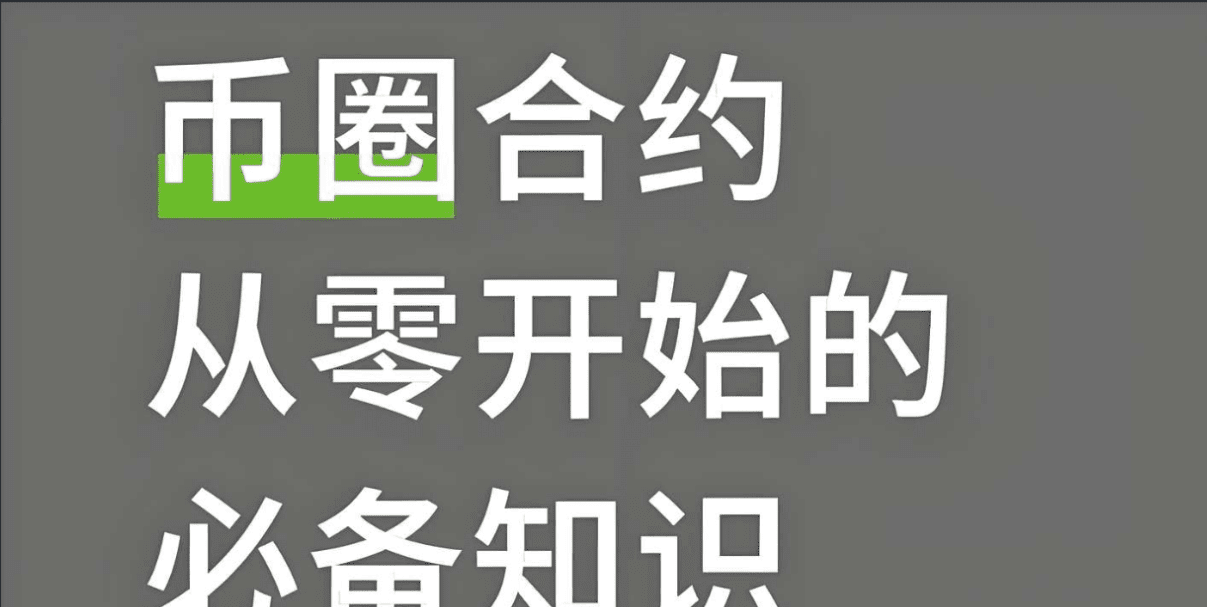
Is it really so unattainable to earn 1 million in the crypto world?
In fact, feasible paths have always existed; it’s just that many people either do not notice or lack the courage to take the first step.
First point: a steady and steady dollar-cost averaging path.
The safest method is to prepare 50,000 to 150,000 yuan to exchange for U and store it in a leading exchange.
Develop a simple dollar-cost averaging plan: fixed investment monthly, 50% allocation to BTC, 40% to ETH, and the remaining 10% to SOL.
The core is not to stare at the market, not to operate blindly, but to stick to the plan for 3-5 years. This path has virtually no competition, a high success rate; most people doing this can reach the million target.
Second point: deep cultivation of hardcore skills.
Suitable for technical players. If you want to earn millions by hunting airdrops and grabbing new chain qualifications, you need to master hardcore skills: Python scripts, remote server operations, batch wallet management...
By mastering these skills, you can become a 'farmer on the chain', accumulating returns through day-to-day airdrop hunting.
But this path has a high threshold and a significant learning cost; every penny earned is truly hard-earned money.
Third point: precise selection of coins in speculation.
If you want to avoid monotony and have some luck and judgment, you can try betting on early explosive coins.
For instance, look for those small coins that have risen over 10 times, which must have support from windfall and endorsements from big players.
But this requires a keen sense of information—mix with the right circles, find the right experts to consult, and also have precise judgment. Only by selecting correctly and daring to take profits can you walk steadily on this path.
Compare these three paths and see which one suits you. More importantly, are you willing to endure the monotony and pressure for the sake of making money?
If you can accept it, start taking action from now on; don’t just stay in your imagination.
Of course, there are 'shortcuts' in the crypto world, like issuing coins or creating projects. These may seem easy, but they require sufficient knowledge and resources; otherwise, it’s easy to fall hard.
Choose the right path, be steady and solid, to go far.
After all, a single tree cannot make a forest; a lone sail cannot go far. Having a reliable team to point the way is better than going it alone—I have always been here!
In the crypto world, to earn 1 million, you either rely on a bull market and hold on, or you rely on hitting the right coin to get rich, or you rely on high leverage to bet in the right direction. However, most people lose money, so don’t just look at the stories of getting rich; first, think clearly about how much risk you can bear.
After the liquidation, I learned from my account with a return rate of 1500%: trading is a system, not a price.
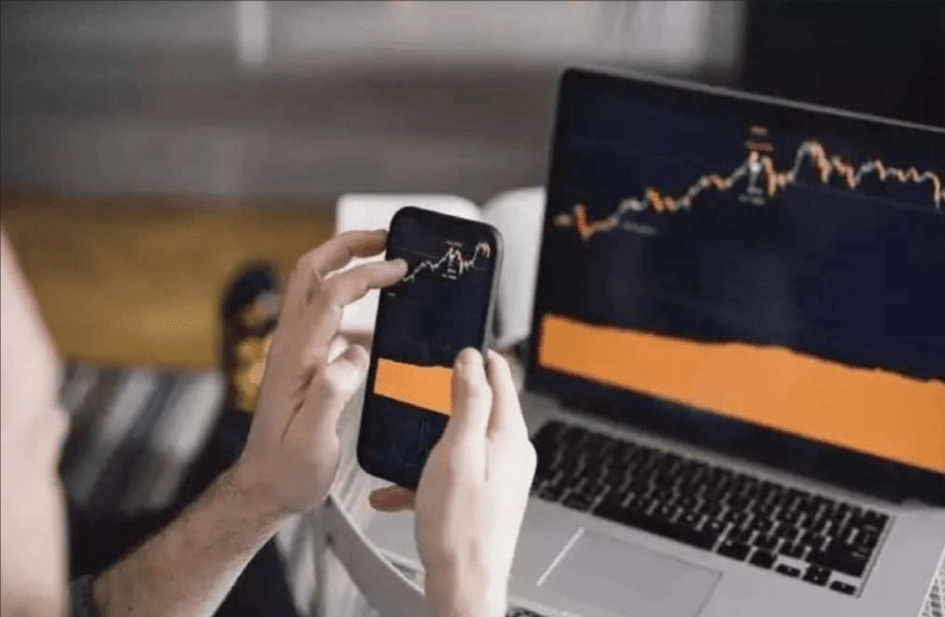
When talking about liquidation, I used 10 different ways to demonstrate where I made mistakes, for example:
I bought this price too late;
Short-term dual kill, did not hold on;
Stop losses set too tight may get hit and rebound right after, and so on.
........
After finishing, I asked: what do you think? My friend pondered for a moment and replied: I don’t think much, trading is not just about price, it’s also about the system. But I didn’t hear you mention a trading system.
Later, he explained the rules of the trading system to me in detail, which benefited me greatly. I summarized it briefly and shared it with everyone.
1. With a trading system, even a layman can profit.
Many people believe that trading is about making profits through price fluctuations.
However, price fluctuations inherently carry a lot of uncertainty. Whether in technical analysis or news, there will always be some deviations from expectations. How you view these deviations will directly affect your trading results.
What is required here is not only market observation skills but also timing for opening and closing positions, position management, and mindset. This is the trading system.
The earliest trading system, I believe, is the grid trading method. Find a range of fluctuations, divide it into many equal-distance grids, and after setting the initial position, buy with each drop and sell with each rise.
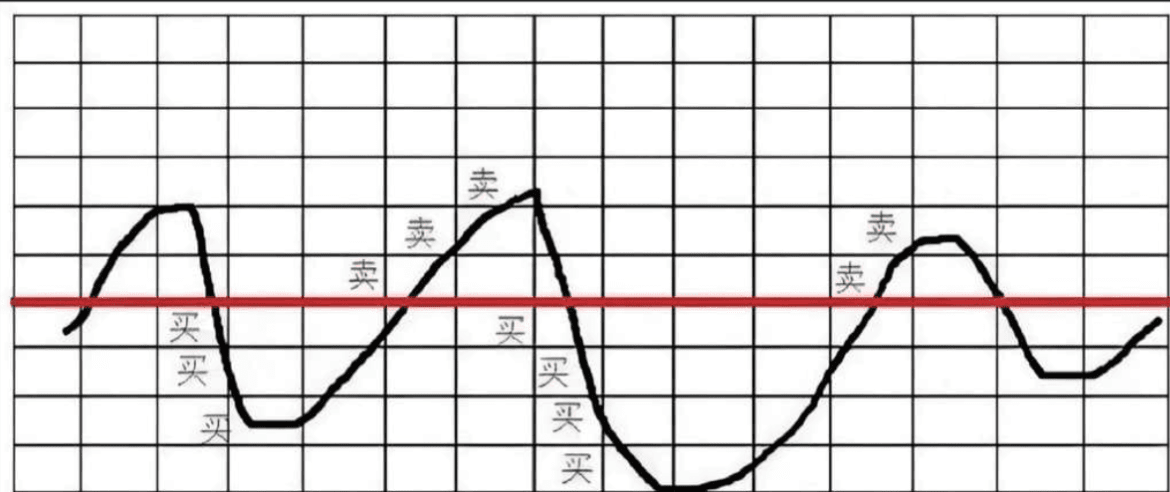
The inventor of the grid trading method is the American mathematician Shannon, who did not understand the market at all but managed to dominate the stock market with the grid trading method, which is astonishing.
However, if you review afterwards, you will find that the grid trading method at least got three things right:
Adhere to discipline and trade according to the grid;
Not influenced by human nature, do not randomly add positions;
Strict position management; Shannon's strategy uses the Kelly formula f=(pb-q)/b to calculate the best position ratio.

This basically covers all the elements that a trading system needs. Therefore, it is not the price, but the system that allows a layman like Shannon to succeed in the market.
Second, it is the system, not the price.
Traders with a trading system never complain about the prices at which they buy.
For example, in the following market segment, according to the requirements of the Dow Theory regarding the normal state of rising, the highs and lows of the market should generally rise together. If you are an aggressive investor, you might consider shorting when the market falls below price 1.
If you are a bit cautious, prices 2 and 3 correspond to previous phase bottoms, both are entry opportunities.
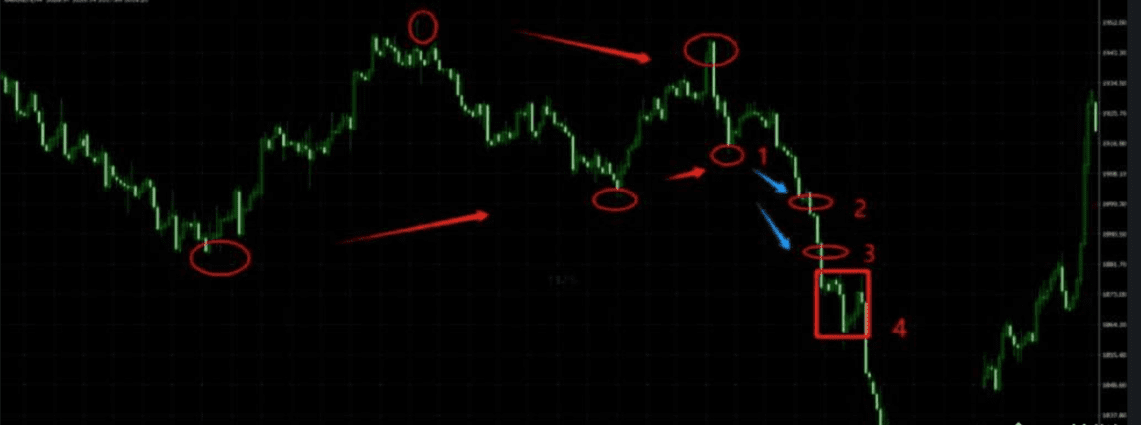
If you still missed it, when the market at price 4 fails to form a bottom, and a large bearish candle pulls out, there is still an opportunity to short. You see, in a trending market, as long as your trading system has one or several such entry indicators, you will ultimately participate, as long as you execute strictly according to your system.
This is also not absolute; as mentioned earlier, price is also uncertain. For example, at the end of this wave of market, although the overall trend is flat and shows signs of bottoming, it still conforms to the normal downward trend. If you unfortunately short here, your stop-loss will determine the extent of your loss control.
I suggest setting the stop loss at 20%-30%, which aligns better with the 3:1 profit-loss ratio requirement. A 3:1 profit-loss ratio ensures that even with multiple losses, you can protect your principal, which is often referred to as 'as long as you make 3 correct trades out of 10'.
If your trading system has such a triggering mechanism, your losing trades will exit near 1850. But don't panic; you will find that the market has again entered a normal upward trend, breaking through previous resistance levels at prices 1, 2, and 3, which are all very good entry opportunities.
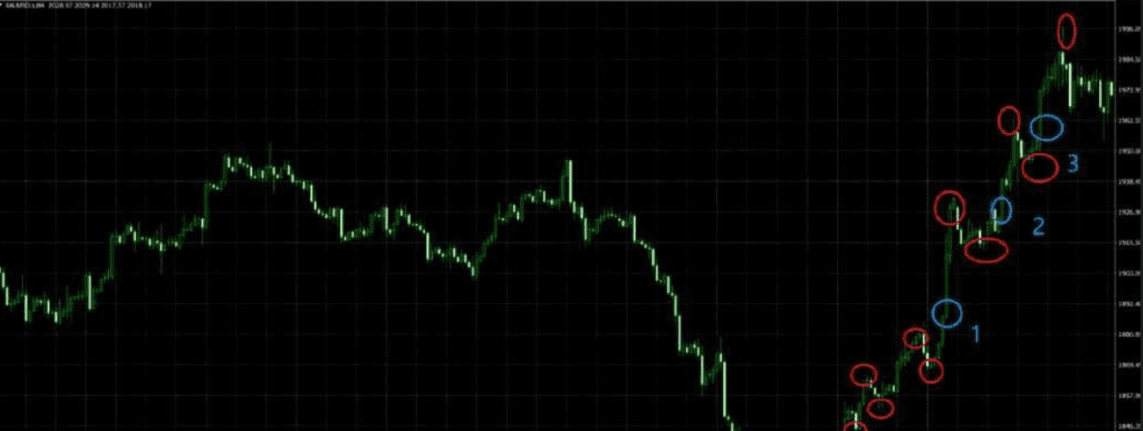
A mature trading system must have a complete mechanism for triggering entry, exit, stop loss, and take profit. Once these mechanisms form a closed loop, they will continuously provide you with trading opportunities.
This market segment is based on the 4-hour snapshot, positioned between short-term and daily trading, and is quite representative in trading. Some experienced investors will also calculate the strength of rebounds and retracements based on the frequency of 4-hour fluctuation points.
Third, protect your principal and profits.
Trading is for profit, but more importantly, it is to protect the principal.
The author of the Chande Theory has repeatedly mentioned that only zero-cost trading carries no risks. In simple terms, it means trading with accumulated profits; even if you incur losses, as long as the principal is still there, there will still be infinite possibilities in the future.
Of course, it is difficult for ordinary investors to trade in this way, but learning to exit in batches is also a very necessary part of perfecting a trading system.
For example, in this market segment, if you bought at the top, you might consider exiting at prices 1, 2, and 3, because usually at key support and resistance levels, there are dense orders, making price reversals likely. Exiting in batches can ensure that profits are protected across different extended positions.
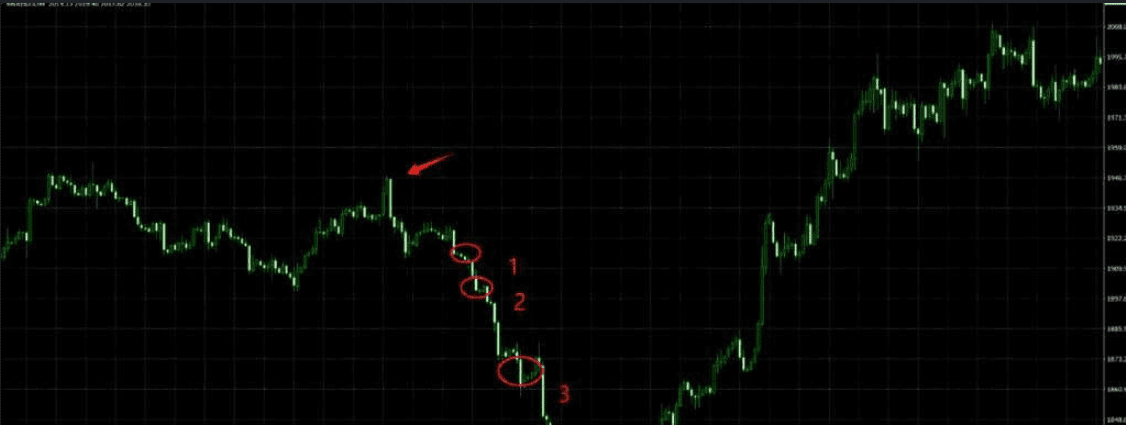
Fourth, learn to coexist with fluctuations.
Price fluctuations can be divided into fluctuations and trends, but fluctuations account for 70%, while trends only account for 30%. Therefore, most of the time, the market leaves for us is not excitement but consolidation.
But this does not mean that there are no trading opportunities in a fluctuating market. In a 30-point market, as long as you confirm the range, high sell and low buy, and keep repeating this tedious process, you can still accumulate profits.
Once a breakout occurs, it usually indicates the end of a consolidation phase and the emergence of a short-term trend. At this time, trade with the trend, manage your take profit and stop loss, and always pay attention to the return of fluctuations. This is a complete trading cycle. If you understand these, your trading system can switch smoothly in different stages of the market.
This concept was actually first demonstrated in Wyckoff's price cycle. The consolidation zone we are tracking corresponds to the accumulation zone and distribution zone, while trending markets actually occur during supply and demand imbalances.
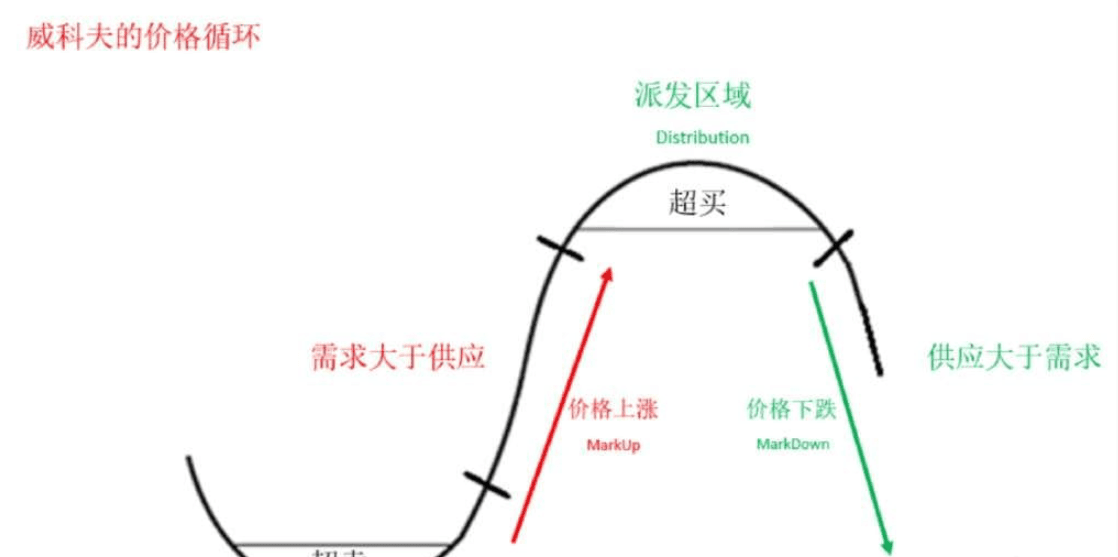
The difficulty of a fluctuating market is how to recognize false signals.
In the Wyckoff trading method, it is believed that a spring effect exists, meaning the market may briefly fall below the fluctuation range but will then rise from the bottom of the range to the top. The spring effect is a process of shaking the market, so it doesn’t last long. Therefore, in your trading system, in addition to setting a stop loss, you must also identify the price signals of breakouts.
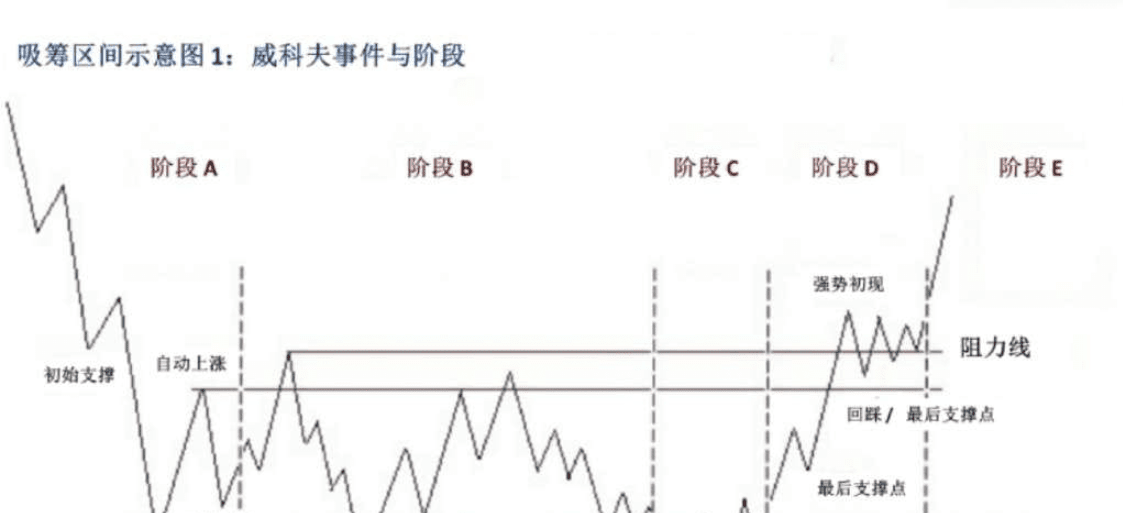
When multiple candlesticks exist outside the fluctuation range and repeatedly test without returning to the range above, it indicates an effective breakdown; conversely, it is a process of shaking the market. A mature trading system will also consider the time factor in addition to price.
In (Wyckoff 2.0), you will also see higher-level judgment methods regarding accumulation and distribution, which involve introducing trading volume data within the framework of time and price.
By analyzing trading volume, you will find that the range of consolidation is precisely where the chips are concentrated. Typically, a market starts because one side has digested the other side's chips, taking control of the price. Therefore, a breakout usually occurs with reduced volume.
Therefore, through the dense volume area, we can determine the value range in advance, understand the fluctuation range, and provide references for grasping fluctuating markets.

Lastly, I particularly like a saying: a trading system is a set of rules that monitors market trends while constraining human nature.
A trading system is a complex set that encompasses skills, mindset, and self-discipline. Many people may not necessarily misunderstand market logic; they might even be well-versed in the various rules of technical analysis. However, they cannot overcome human weaknesses, chasing trends and selling low, exiting with small profits, and holding on during large losses, repeatedly missing opportunities when faced with market uncertainty.
However, the best way to avoid uncertainty is to face it head-on, control risk with profit-taking and stop-loss measures, protect your principal and profits by exiting in batches, and strictly adhere to trading discipline, only then can you truly turn thinking into a treasure of profit.
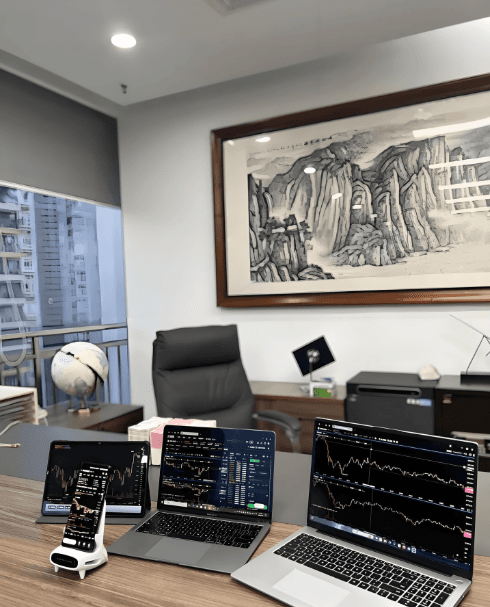
Having been in the crypto world for so long, I have always adhered to a 'simple method'—it looks unadorned but can steadily yield profits. The core is just one thing: follow the plan, don’t overthink.
First, filter out the coins worth watching.
For those that have surged into the increase list within 11 days, first add them to the watchlist. But there’s a rule: if they fall for more than three consecutive days, kick them out immediately. Such coins are likely to have made enough profit and are no longer worth touching.
Then look at whether the long-term trend is strong.
Open the candlestick chart, switch to the monthly level, and only keep the MACD that has crossed up. A monthly golden cross indicates that the big trend is upward, helping you filter out those 'weak coins' that cannot be supported.
Find a precise entry point.
Switch to the daily chart, keep your eyes on the 60-day moving average:
- Wait for the coin price to pull back to this line, and then match it with a candlestick with increasing volume, and then go in heavily.
- Remember, the 60-day line is both the 'road sign' for you to enter the market and the 'warning line' reminding you to exit.
When selling, there must be rules; stop-loss is non-negotiable.
After entering the market, follow these rules:
- If the price rises by 30%, first sell one-third.
- If it rises to 50%, then sell one-third.
- The most crucial point: if after buying, the price drops below the 60-day line the next day, no matter the situation, liquidate all positions! Do not hold any illusions.
Of course, using monthly and daily charts, the situation of breaking below the 60-day line is rare, but the risk must be tightly controlled. Even if you miss selling, it’s no problem; just wait until it meets the entry conditions again and buy back.
Lastly, let me say something heartfelt.
In the crypto world, preserving your principal is more important than anything else. Trading looks like a contest with the market, but in reality, it is a struggle against your own greed and luck—where you think it’s dangerous, there may be opportunities hidden; where it looks like an opportunity, it may actually be a pitfall. The temperament of the overall market and individual coins is also different; you have to be flexible.
In simple terms, finding ways to make money is not difficult; the challenge lies in execution. The 60-day line must be etched in your mind: if it breaks, exit; don’t ask why. In this market, staying alive gives you the chance to earn more.
In the crypto world, to earn 1 million, you either rely on a bull market and hold on, or you rely on hitting the right coin to get rich, or you rely on high leverage to bet in the right direction. However, most people lose money, so don’t just look at the stories of getting rich; first, think clearly about how much risk you can bear.
Teaching a man to fish is better than giving him a fish.
Crypto investors, whether novices or experts, gain not only financial returns but also growth in investment knowledge and experience.
In all the investment processes of hardcore fans, we will not only provide investors with analysis ideas of the market, basic knowledge of market observation, and methods for using various investment tools, but also bring exciting fundamental interpretations, sorting out the chaotic international situation, and distinguishing various investment effects.
Make you both a winner and an expert in investing!


